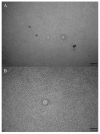Study of the Repellent Activity of 60 Essential Oils and Their Main Constituents against Aedes albopictus, and Nano-Formulation Development
- PMID: 36554987
- PMCID: PMC9782114
- DOI: 10.3390/insects13121077
Study of the Repellent Activity of 60 Essential Oils and Their Main Constituents against Aedes albopictus, and Nano-Formulation Development
Abstract
Mosquitoes are one of the most important disease vectors from a medical viewpoint in that they transmit several diseases such as malaria, filariasis, yellow and Dengue fever. Mosquito vector control and personal protection from mosquito bites are currently the most efficient ways to prevent these diseases. Several synthetic repellents such as DEET, ethyl butylacetylaminopropionate (IR3535) and 1-(1-methylpropoxycarbonyl)-2-(2-hydroxyethyl)piperidine) (Picaridin), have been widely used to prevent humans from receiving mosquito bites. However, the use of synthetic repellents has raised several environment and health concerns. Therefore, essential oils (EOs) as natural alternatives receive our attention. In order to discover highly effective mosquito repellents from natural sources, the repellent activity of 60 commercial EOs against Ae. albopictus was screened in this study. Eight EOs including cinnamon, marjoram, lemongrass, bay, chamomile, jasmine, peppermint2, and thyme, showed a suitable repellent rate (>40%) at the tested dose of 10 μg/cm2. Then, their main constituents were analyzed by GC-MS, and the active constituents were identified. The most active compounds including cinnamaldehyde, citral and terpinen-4-ol, exhibited an 82%, 65% and 60% repellent rate, respectively. Moreover, the nanoemulsions of the three active compounds were prepared and characterized. In the arm-in-cage assay, the protection times of the nanoemulsions of cinnamaldehyde and citral were significantly extended compared with their normal solutions. This study provides several lead compounds to develop new mosquito repellents, and it suggests that nanoemulsification is an effective method for improving the duration of the activity of natural repellents.
Keywords: Aedes albopictus; essential oil; nanoemulsion; repellent.
Conflict of interest statement
The authors declare that they have no known competing financial interest or personal relationships that could have appeared to influence the work reported in this paper.
Figures






Similar articles
-
Insecticidal and mosquito repellent efficacy of the essential oils from stem bark and wood of Hazomalania voyronii.J Ethnopharmacol. 2020 Feb 10;248:112333. doi: 10.1016/j.jep.2019.112333. Epub 2019 Oct 22. J Ethnopharmacol. 2020. PMID: 31654797
-
Mosquito Repellent Potential of Carpesium abrotanoides Essential Oil and Its Main Components Against a Dengue Vector, Aedes aegypti (Diptera: Culicidae).J Med Entomol. 2022 May 11;59(3):801-809. doi: 10.1093/jme/tjac009. J Med Entomol. 2022. PMID: 35157071
-
Repellent Screening of Selected Plant Essential Oils Against Dengue Fever Mosquitoes Using Behavior Bioassays.Neotrop Entomol. 2023 Jun;52(3):521-529. doi: 10.1007/s13744-023-01039-z. Epub 2023 Mar 16. Neotrop Entomol. 2023. PMID: 36928838 Free PMC article.
-
Trends in insect repellent formulations: A review.Int J Pharm. 2018 Mar 25;539(1-2):190-209. doi: 10.1016/j.ijpharm.2018.01.046. Epub 2018 Feb 3. Int J Pharm. 2018. PMID: 29410208 Review.
-
Patent literature on mosquito repellent inventions which contain plant essential oils--a review.Planta Med. 2011 Apr;77(6):598-617. doi: 10.1055/s-0030-1270723. Epub 2011 Feb 15. Planta Med. 2011. PMID: 21328177 Review.
Cited by
-
Tiny Green Army: Fighting Malaria with Plants and Nanotechnology.Pharmaceutics. 2024 May 23;16(6):699. doi: 10.3390/pharmaceutics16060699. Pharmaceutics. 2024. PMID: 38931823 Free PMC article. Review.
-
Exploring the Larvicidal and Repellent Potential of Taurus Cedar (Cedrus libani) Tar against the Brown Dog Tick (Rhipicephalus sanguineus sensu lato).Molecules. 2023 Nov 21;28(23):7689. doi: 10.3390/molecules28237689. Molecules. 2023. PMID: 38067421 Free PMC article.
-
Technological Advancements in Mosquito Repellents: Challenges and Opportunities in Plant-Based Repellents.Acta Parasitol. 2025 May 28;70(3):117. doi: 10.1007/s11686-025-01054-7. Acta Parasitol. 2025. PMID: 40434490 Review.
-
Changes in the life history traits in Aedes aegypti selected for resistance to permethrin and thymol, a spatial repellent.PLoS One. 2025 Aug 19;20(8):e0329776. doi: 10.1371/journal.pone.0329776. eCollection 2025. PLoS One. 2025. PMID: 40828783 Free PMC article.
-
Validation of reliable reference genes for comparison of gene expression across species in the Anopheles Hyrcanus Group.Sci Rep. 2025 Mar 16;15(1):9037. doi: 10.1038/s41598-024-84361-9. Sci Rep. 2025. PMID: 40090932 Free PMC article.
References
-
- Geetha R.V., Roy A. Essential Oil Repellents—A Short Review. Int. J. Drug Dev. Res. 2014;6:20–27.
Grants and funding
- 2021WGALH10/Wuyi University-Hong Kong and Macao Joint Research Fund
- 2017RC04/Start-up Foundation for High-level Talents of Wuyi University
- Jiangke(2018)352/Special Fund Project of Science and Technology Innovation Strategy in Guangdong Province
- 2021030101400004873/Jiangmen Science and Technology Project of Basic and Theoretical Science Research
- 202111349298/Project of Innovative and Entrepreneurship for College Students in Wuyi University
LinkOut - more resources
Full Text Sources
Other Literature Sources
Miscellaneous

